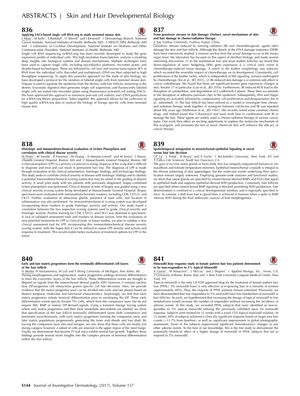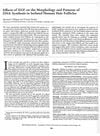Early and Late Matrix Progenitors Form the Terminally Differentiated Cell Layers of the Hair Follicle
April 2017
in “
Journal of Investigative Dermatology
”

TLDR Early and late matrix progenitors in hair follicles create different cell layers, with early ones forming the companion layer and later ones forming the inner root sheath and hair shaft.
The document presents findings from a study on the differentiation of matrix progenitors in hair follicle formation. The researchers at the University of Michigan discovered that the matrix progenitor pool in hair follicles can be divided into early and late phases, each with distinct temporal, molecular, and functional characteristics. They found that early matrix progenitors begin terminal differentiation before surrounding the dermal papilla (DP) and specify Keratin 79+ cells for the companion layer without requiring signals from Shh, BMP, or mature DP. Using lineage tracing, they showed that the specification of terminally differentiated layers in the hair follicle starts and ends asynchronously, with early progenitors forming the companion layer and later progenitors forming the inner root sheath and hair shaft. They also observed that during catagen, most companion layer cells are lost, but some are retained in the upper inner bulge. Additionally, Keratin 79 null mice exhibited normal hair growth, suggesting that this protein is not essential for hair growth. These findings provide new insights into the complex process of hair follicle differentiation.


